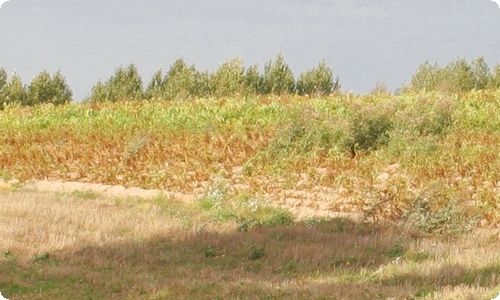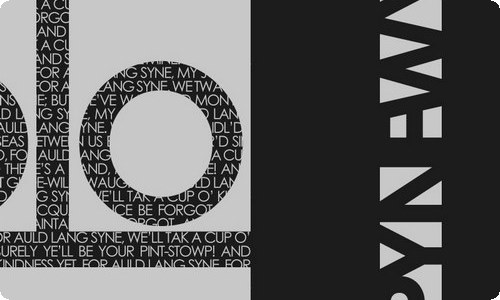初一英语教学计划

初一英语教学计划
时间流逝得如此之快,相信大家对即将到来的工作生活满心期待吧!让我们一起来学习写计划吧。好的计划是什么样的呢?下面是小编精心整理的初一英语教学计划,欢迎大家分享。
初一英语教学计划1Starter Unit 1 Good morning!
课程目标
一、知识和能力目标
本单元要求学生掌握英文字母A—H,能认读其印刷体和手写体字母的大小写等四种形式。书写(大写和小写,笔顺,笔画)基本合乎要求。能看,听,说本单元所列的日常交际用语,重点学会打招呼,并做到语音语调正确。注意一些字母及日常交际用语的发音,提醒学生不要将C/si:/发成/sei:/;也不要将Good morning/
二、过程和方法目标
教师要尽量用英语组织教学。充分利用课堂的40分钟,不讲或少讲汉语,尽量给学生创造英语情景。教师可以用手势,表情,动作等示意,帮助学生听懂课堂用语和日常交际用语,第一次介绍某个用语时,说英语,加译文及手势,以后可酌情省去译文,最后只说英语,逐步让学生听懂。
三、情感态度和价值观目标
万事开头难,首先利用这个单元培养学生们对英语的兴趣,因为兴趣是最好的老师。 学情分析
体会打招呼用语的奥妙所在,做到灵活运用。
1.Good morning /afternoon /evening:适用于比较正式客气的场合,双方都应说Good morning /afternoon /evening!例如:
A:Good morning,Miss Zhao.早晨好,赵老师。
B:Good morning,Mr.Wang.早晨好,王校长。
2.Morning:适用于比较熟悉的朋友之间或比较繁忙的情况下。
3.Hello:是最广泛、最简单的.打招呼语,显得亲切自然。例如:
A:Hello,Kate.你好,凯特。
B:Hero,Li Lei.你好,李雷。
4.Hi:在现代英语中,Hi比Hello用得更多,显得更随和。例如:
A:Hi,Han Meimei.你好,韩梅梅。
B:Hi,Lucy.你好,露西。
教学准备
tape—recorder,multimedium.
课时参考
四课时
Period 1
Step 1:Introduction
Begin by greeting the class with a smile and good morning!
Now,introduce the words ―teacher‖ and ―class‖.by using gestures.Repeat
this several times and have the class repeat after you.Students Can answer as a whole group.As rows and as individuals.Repeat ―I am your teacher and you are the class‖ several times.
Now,introduce the class to the instructions:Class,please sit down and class,please stand up by using actions and gestures.They can practice this several times.
Step 2:Lead—in
You may want t0 leave the class again to introduce the usual Good morning routine.Say Good morning class.Help students respond with Good morning.Point to yourself and say I‘m Miss/,Mr.…Have them repeat.Explain the terms Miss and Mr.in Chinese.
Repeat this a few times with rows and individuals or try a ―back-chain‖ drill:
Miss,Mr.… (Ss repeat)
Morning,Miss/M r.… (Ss repeat)
Good morning,Miss,Mr.… (Ss repeat)
Step 3:Practice
Say:Stand up,please! (Ss stand up)
Leave the classroom,return and say Good morning,class! Help the students respond with Good morning,Miss/,Mr.…Say Sit down,please.Now let‘s start the lesson.
Step 4:Presentation and activity
Now point to yourself and say My name is Miss/Mr. … I am your teacher.
Find a student you know and say your name is…(Beth).Then ask What is your name? Help them respond with My name is… . When the student answers, respond with Hello…Nice to meet you! Repeat this activity several times,first with students you know and then with others.Help them to respond with Nice to meet you,too.Explain the Word ―too‘‘ in Chinese.
Step 5:Practice
Get the students to practice the f0llowing dialogue in pairs.
S1:Good morning.
S2:Good morning.I‘m (Ben).What‘s ……此处隐藏18311个字……/p>
6. 注意学生思维能力,创造力,学生学习能力的培养。注重听,说,读,写的能力。
教材内容:
游戏,写作,谈论家庭,爱好,假日,食物等。
教学措施:
1. 掌握知识点,合理确定重点,难点,注重知识的外延。
2. 充分发挥学生的主渠道作用,充分体现教材的规律。
3. 精心设计习题。向课堂45分钟要质量。
4. 教学时间分配,共12单元,授课16周,每周4课时。
初一英语教学计划151.There is +单数可数名词/不可数名词+ 地点状语.
There are +复数名词+地点状语.
谓语动词要与跟它最近的那个名词一致(就近原则)。
There be句型的否定式在be后加上not或no即可。
注意not和no的不同:not是副词,no为形容词,not a/an/any + n. 相当于no+ n.
There be句型的一般疑问句变化是把be动词调整到句首
There be表示“某处存在某物或某人”;have表示“某人拥有某物/某人”
2.问路:
①Is/ Are there ……near here/ around here/ in the neighborhood?
②Where is/ are……?
③How can I get to……?
④Could/Can you tell me the way to……
⑤Which is the way to……
3.Across,cross,through,over
Across是介词,“横过,在对面”表示从物体表面穿过
Cross是动词,相当于go/ walk across
Through是介词,表示从物体中间或里面穿过 go through the door
Over是介词,“横过,越过”表示从物体上空越过,跨过 fly over
4.ask for help/ advice
5.in/ on the street
6.在某条大街上习惯用介词on on Bridge Street
7.across from,next to,between…and…,behind
8.in front of在…(外部的)前面→behind在…后面 in the front of在…(内部的)前面
9.be in town→be out of town
10.be far from
11.go/ walk along go straight go up/ down
12.turn left/right
13.on one’s/ the left
14.at the first crossing/ turning
15.sometimes 有时(频度副词)
sometime(将来)有朝一日,(曾经)某天
Some times 几次,几倍 some time 一段时间(前面用介词for)
16.free
空闲的 free time
自由的 as free as a fish
免费的 The best things in life are free.
17.enjoy doing
18.Time goes quickly.
19.表“一些”在肯定句中用some. 在疑问句和否定句中用any。
特殊用法:some可用于表示盼望得到对方肯定的答复或表示建议、委婉请求的疑问句中。
any也可用于肯定句中,表示“任何的”。
七年级上册英语期中考试知识点
在英语中询问“怎么样?”是个很常见的话题,牵涉到不同的意思和不同的句型,只有以恰当的句型去适应不同的意思,才能体现 “原汁原味”的.英语。常见的相关句型有:
一、在询问、提出建议或征求对方意见时,用“What (how) about...?”的句型,about 的后面可以接名词、动名词或代词。如:
I'm going to fly a kite this afternoon. What about you?
今天下午我要去放风筝。你呢?
What about playing chess now? 现在下棋怎么样?
二、要询问某人或某事现在的情况(如身体状况,学习状况等),用“How is (are)...?”的句型。如:
How's everything there?
那儿一切怎么样?
How's your father? Is he much better now?
你父亲怎样?现在好多了吗?
三、要询问人的外貌、品德(重点指客观印象)或天气情况,用“What's ... like ...?的句型。如:
What's the weather like today? = How's the weather today?
今天天气怎么样?
— What's his mother like?
— She's tall and thin.
他妈妈长得怎样?
她长得又高又瘦。
四、要询问对某事物的感觉和喜欢的程度时用“How do you like ...?”的句型。如:
How do you like the cartoon film “Mickey And Mouse”?
你觉得卡通电影“米老鼠和唐老鸭”怎么样?
How do you like Hangzhou?
你觉得杭州怎么样?
五、要询问对方对某事的看法和态度或想法时,用“What do you think of ...?”的句型。如:
What do you think of the supergirls?
你认为超级女生怎么样?
What do you think of the plan?
你觉得这个计划怎样?
六、要询问对方工作学习进展现状情况或与人相处得如何时用 “How are you getting on with…?”的句型。如:
How are you getting on with your English study?
你英语学得怎样?
How are you getting on with your classmates?
你与你的同班同学相处得怎么样?

文档为doc格式



